In Chiaro Technology Limited v Mayborn (UK) Limited, the High Court held that three UK registered designs, owned by Chiaro in respect of its Elvie wearable electric breast pump, were not infringed by Mayborn's wearable electric Tommee Tippee "Made for Me" breast pump.
This judgment provides useful guidance on the test for whether or not a design feature is "solely dictated" by "technical function" (and thereby excluded from design protection); here the fact Elvie held an earlier patent covering the same design was not determinative in this assessment, and was simply one of the pieces of objective evidence that the Court needed to assess when determining whether the exception applied.
Background
Chiaro Technology (Elvie) issued a claim in the UK High Court alleging that the Made for Me pump offered by Mayborn infringed three UK registered designs for its electric in-bra Elvie breast pump as follows:
- 0010 Design: covering the design of the Elvie pump as a whole
- 0002 Design: covering the front housing of the Elvie pump
- 0003 Design: covering the milk collection vessel (MCV) at the bottom of the Elvie pump
A comparison of Elvie's design registrations and the Made for Me pump is as follows:
|
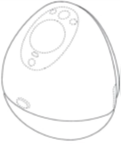
0010 Design
|
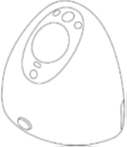
0002 Design
|
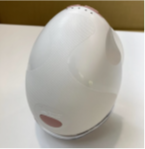
Made for Me pump
|
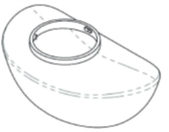
0003 Design
|
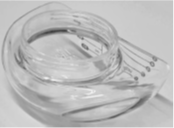
MCV of the Made for Me pump
|
|
Features solely dictated by technical function – an objective test
One of the key points at issue in the case was the extent to which certain important features of the Designs were excluded from protection, leaving little remaining for the infringement comparison with the Made for Me pump. This required an assessment of the provision that a registered design shall not subsist in "features of appearance of a product which are solely dictated by the product's technical function". The Judge referred to the applicable legal test for this exclusion, in line with the 2018 CJEU Judgment Doceram v CeramTee (which continues to apply in the UK as retained EU law). The Doceram decision confirmed that an aspect of a design will be "solely dictated" by technical function where the design feature in question can be shown, on the basis of objective evidence, to be dictated only by the need to achieve a technical solution, in circumstances where aesthetic considerations are not relevant. The test does not require that the design is the only means by which the product's technical function can be achieved.
One issue to be resolved following Doceram was whether the designer's subjective intentions were relevant. Whilst the case law on this point was not clear, the High Court held that as a matter of principle, the designer's subjective intentions were not relevant. A third party should be able to consider whether its product infringes a registered design simply by looking at the registration and other objective available evidence, and decide the answer to the question on this basis alone. Indeed, the subjective intentions of the designer would not always be available to the third party.
The role of patents covering the same design
A further point which remained unclear following Doceram was the degree of significance that should be attributed to the existence of patent protection in order to demonstrate the functionality of the designs. Mayborn argued that where a feature appears in both a patent and a registered design, that is a good indication that the feature was functional. It also appeared to argue that where the patent was an equivalent of the design and was owned by the registered design owner, that was conclusive evidence that the features were functional.
The Judge noted that it was clearly right to look at appropriate patents when assessing functionality of a design, but a patent could not be treated as some sort of conclusive statement by the owner of the registered design as to the pure functionality of the design. Instead, the existence or otherwise of a patent should be treated as objective evidence of the functional qualities of what the patent describes (which would be stronger evidence if it was the registered design owner's patent). However, the fact Elvie owned an earlier patent covering the same design did not demonstrate conclusively that the features shown were dictated solely by technical function, given such an argument would be tantamount to treating a patent as a statement of the designer's subjective design motivation, which the Court had already found to be irrelevant.
Designer freedom and relevant sector to be applied
The Court also made some brief findings on designer freedom and the relevant sector. On designer freedom (which must be taken into consideration when determining whether a different overall impression is produced by the allegedly infringing product), it held that the correct starting point is the design registration itself and not the design corpus. There was little point considering technical limitations on the design process which were not apparent from the design, even if they were apparent from the design corpus.
As for the relevant sector, the High Court held that one cannot take a "top-down approach," here the sector was held not to be wearable breast pumps but rather wearable electric breast pumps.
Judgment
Applying the above findings, the High Court held that a number of features of the Elvie designs, including its inner surface, were solely dictated by the product's technical function given the need to co-operate with the shape of both the bra and the breast, and the need for the milk to flow downwards to be collected. The teardrop shape of the Elvie pump design, including the gravity-fed, flat bottom and transparent features of the MCV design embodied functional, not aesthetic choices.
Having removed from its comparison the features of the designs that were solely dictated by technical function, and taking into account the limited design freedom arising from the functional requirements of the product, the Court then applied the "overall impression" test summarised in M&S v Aldi (see our commentary on this case here). It concluded that the remaining differences between Elvie's registrations and the Made for Me product (notably the scalloped edges, different button placement and interior groove placement), although seemingly minimal aesthetic differences, were sufficient to produce a different overall impression.
Comment
The decision provides further guidance on the technical function exception, in particular the role in this assessment of the design proprietor's subjective design intention and the existence of earlier patents (in particular those owned by the design proprietor).
Whilst a particular product can be protected by both a patent and a registered design, this decision is a reminder that the existence of a patent covering the same design may impact the assessment of the functionality of a design, which may then affect the scope and strength of any registered design protection for the product in question. Innovators should bear this mind when developing their IP strategies.